| Photojournal
- 13 May 2006
Birdless
at Queen E
| On Saturday,
the 13th of May, I woke up early for some reason. I could've gone
back to sleep, but instead I decided to try some early birding.
So I got ready and went out, and at 7:15 I found myself at the gate
to the inner ponds at Iona Beach. After punching in the code and
entering, the first thing I found were a few bright orange flowers,
not yet opened up. I've seen lots of these around, but don't know
what they are. |
|
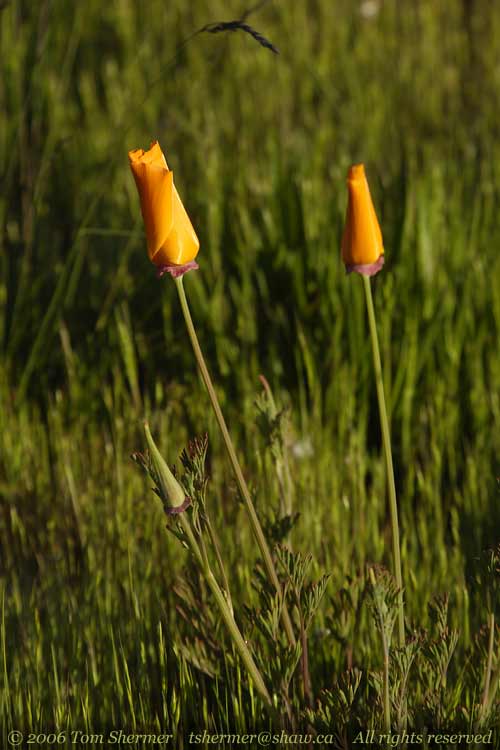 |
| I was looking
for shorebirds at the inner ponds. In the southwest pond I came
upon some: Western Sandpipers. I slowly crept up towards them with
my camera and got in a decent location for photos. |
|
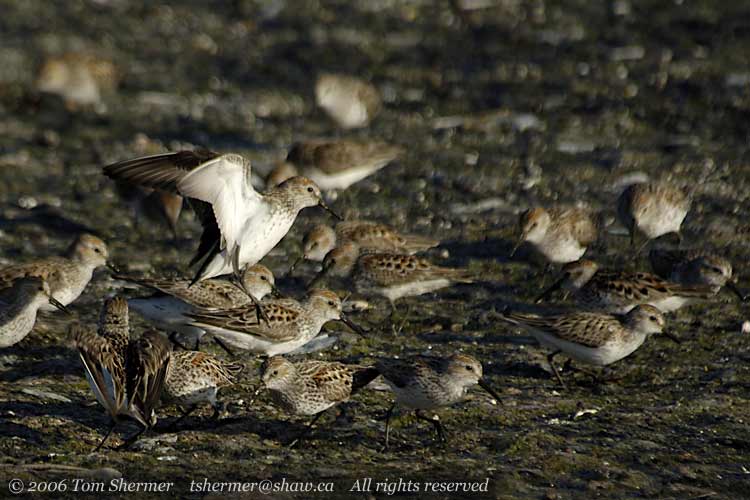 |
| I've been
closer to Westerns, but this seemed like a pretty skittish bunch.
Even at the distance I was at, they would jump at the sound of the
camera shutter. |
|
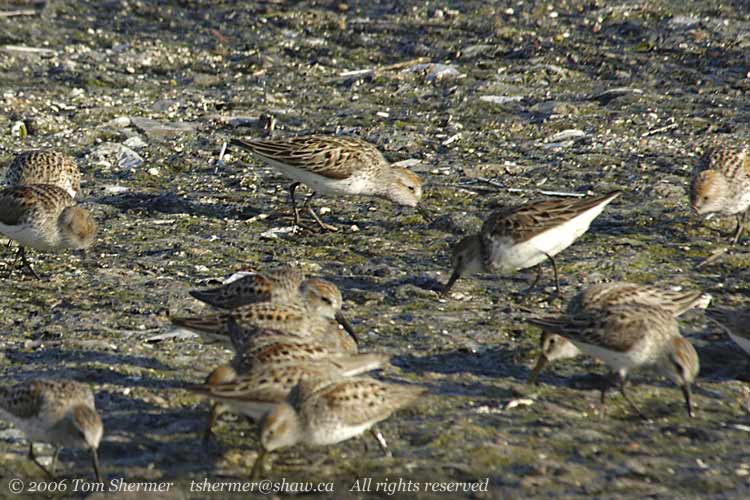 |
| I walked
around the outside of the west ponds, and found this little Tree
Swallow on the wire when I got to the north side. |
|
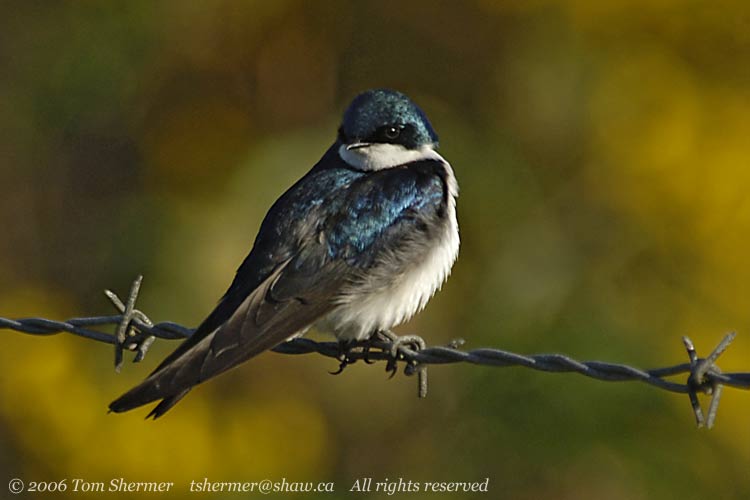 |
| The northwest
pond didn't seem to have any shorebirds in it. It did have a few
different ducks, though. Like this male Gadwall. |
|
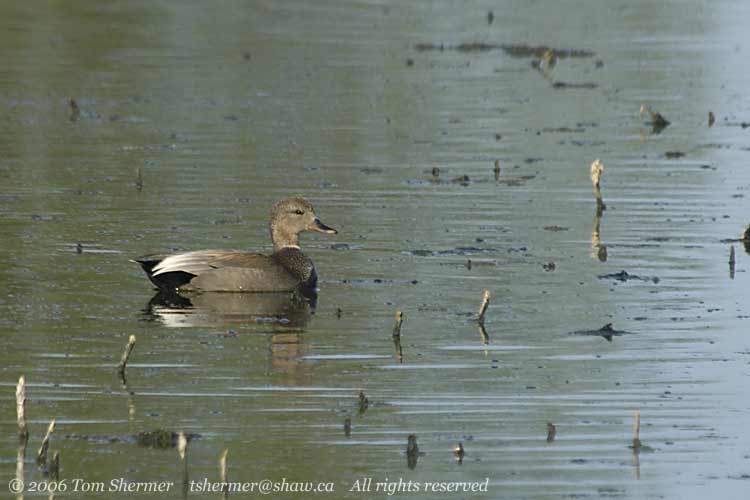 |
| And this
group of Northern Shovelers—five males and a female. |
|
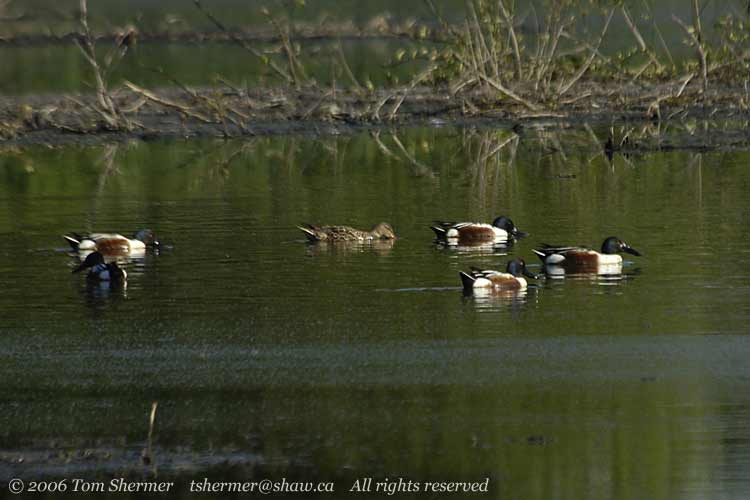 |
|
There were also a few
Green-winged Teal on that pond, but they all stayed far enough
away that I wasn't able to get any good photos.
I headed for the intersection
in the middle of the four ponds. This little family of Canada
Geese must've seen me coming, because they were hightailing it
down the path in front of me.
|
|
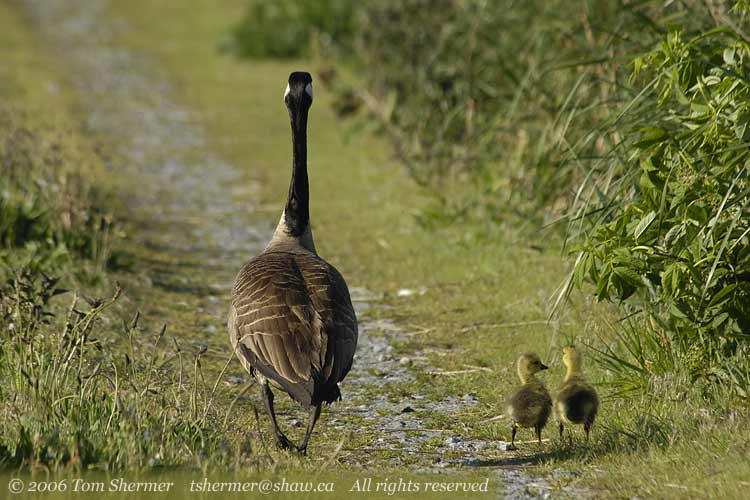 |
| As I walked
from the center of the ponds back to the west, I found a stretch
of path where the northwest pond took on lovely tones of light and
medium blue. Into this lovely blue floated a goose, and so I had
a ready-made photo-op. |
|
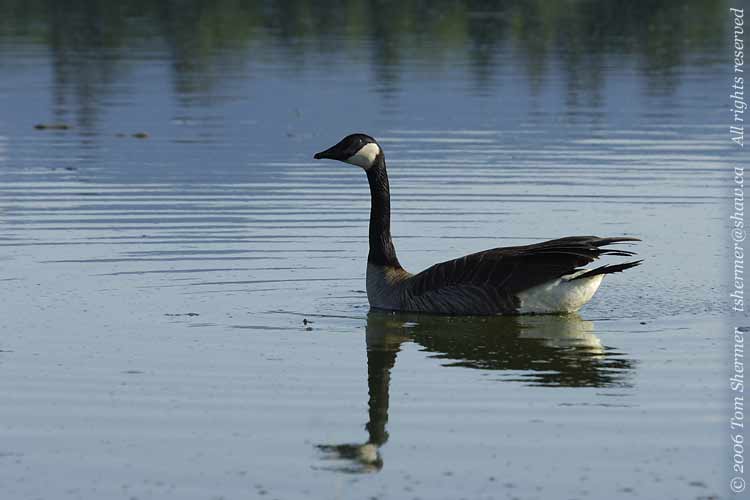 |
|
Sadly, the photo doesn't
capture the real intensity of color on the water.
Looking the other way
from this location, I saw that the flock of Western Sandpipers
was in the air, and after weaving this way and that for a while,
it settled in the corner of the northwest pond.
|
|
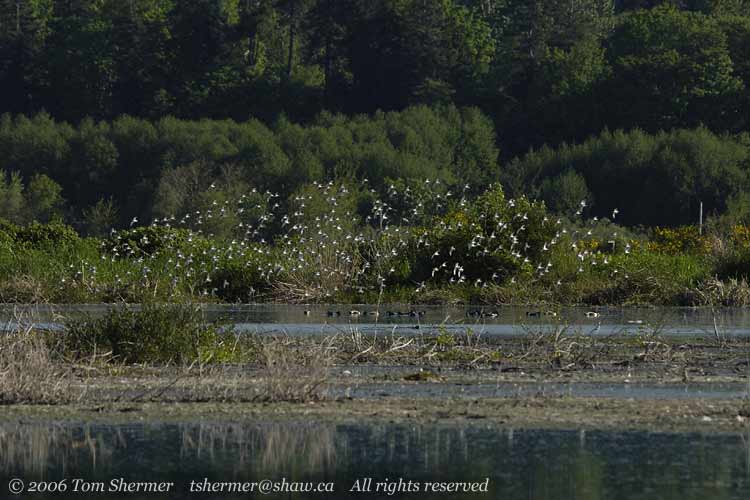 |
|
I completed my journey
through the inner ponds by walking around the southwest pond again,
where a few Westerns were foraging separate from the flock. Unfortunately,
the angles I had on them were mostly eastward, which at this time
of day meant facing into the sun. That's far from ideal, and I
already had photos of Westerns, so I didn't try too many shots.
When I got back to
my car, the park gate was open, so I drove in to the parking lot,
intending to go by the outer ponds and look for Yellow-headed
Blackbirds. As I headed towards the north outer pond, I encountered
the following tree swallow resting on a signpost.
|
|
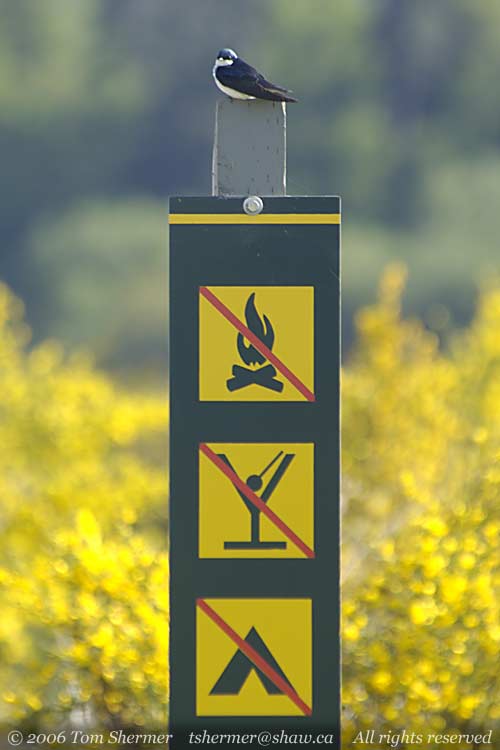 |
|
It's a good thing that
none of those little pictures means "no perching".
Over at the northern
outer pond, I found the Yellow-headed Blackbirds I was looking
for. I stayed there for quite a while, just enjoying the cool
sounds they make. Here's a male Yellow-headed.
|
|
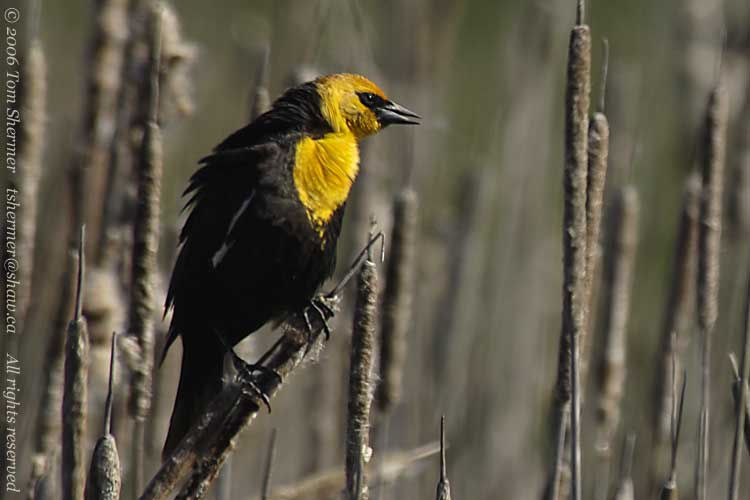 |
| Aside from
the black bits and the yellow bits, Yellow-headed Blackbirds (at
least the males) also have some white bits on their wings; you can
see a little of this on the right shoulder of the bird below. Maybe
they should be called White-spotted Yellow-headed Blackbirds. |
|
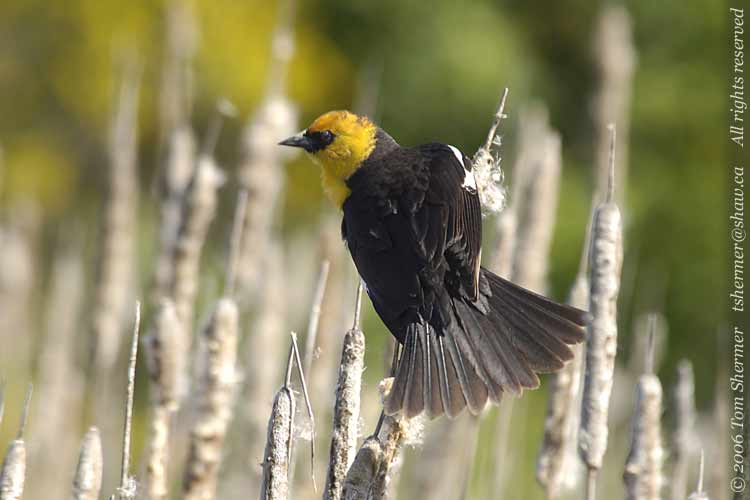 |
|
I didn't get any photos
of female Yellowheads. There were a few around, but they stuck
mostly to parts of the marsh where there was just too much stuff
in the way to get a good photo.
Also hanging out in
the marsh were Red-winged Blackbirds. I got a decent close shot
of a female who briefly landed on a nearby cattail.
|
|
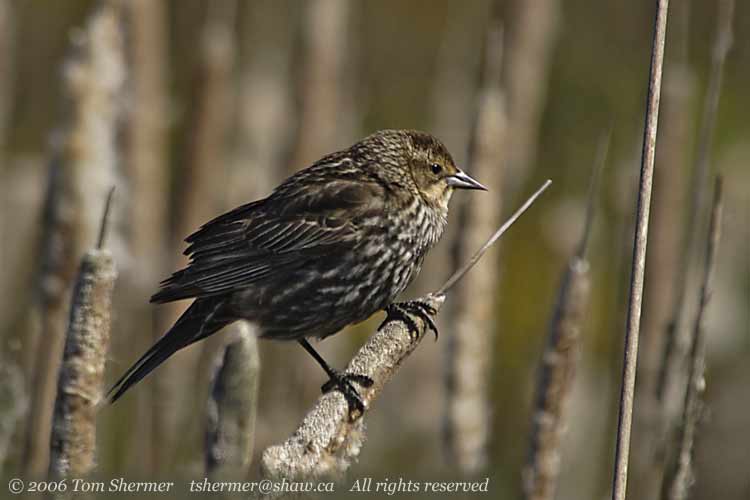 |
|
By this time, it was
about 10 o'clock, and I decided to go grab some food. I ended
up calling the food "lunch", and just as it was getting
used to this new name, I ate it.
It then occurred to
me that I had just finished a meal, and that there is an English
word, postprandial, that means "after a meal."
I further remembered that most times that I've heard the word
postprandial, it was in the noun phrase postprandial nap. I
pondered this for a moment.
Perhaps you see where
this is going.
Well, even if you didn't
see where that was going, I certainly did, so I went back home
and followed where my linguistic pondering had led.
A few hours later,
I got up, and I checked the 'net to find that my friend Ilya had
been out that morning to Queen Elizabeth Park. While there, he
had seen a Nashville Warbler hanging out with a bunch of other
warblers. We don't normally get Nashvilles around here, so with
the late afternoon on my hands I headed over to Queen E. Park.
Queen E. Park, in Vancouver,
is not to be confused with Queen's Park, in New Westminster, where
I had been in my last photojournal entry.
I parked down the road
a ways from the restaurant in the park, and walked towards the
area where Ilya had seen the warbler. On my way, I encountered
my first Green Comma of the year.
|
|
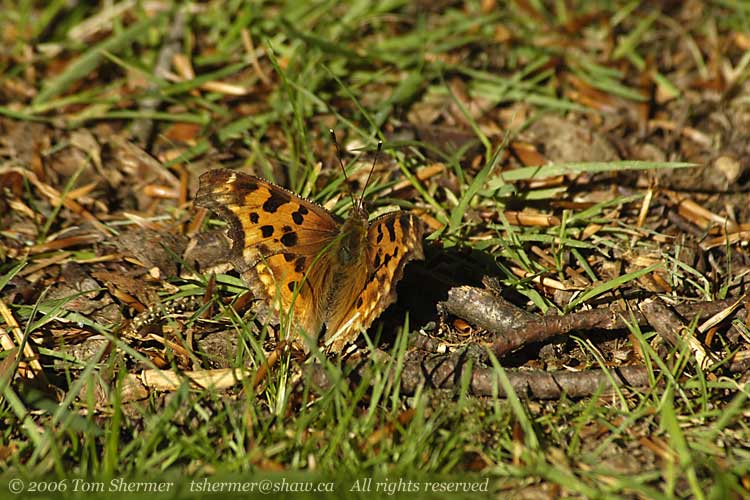 |
|
Well, I went to the
area specified and searched for half an hour or so, not finding
any birds except a few crows. I then remembered a time when I
went to Queen Elizabeth Park last year, in the afternoon, and
found nothing. Maybe the park just wasn't a good afternoon hangout
for birds. So I put searching for birds on the back burner and
decided to see if there was anything else photogenic around.
That turned out to
be a good plan, as I soon came upon a Monkey Puzzle Tree. The
branches of a Monkey Puzzle are enspiralled by thick, stiff leaves,
something like the petals on a succulent. I took many different
photos of the tree, and I'll show you the three that I liked the
most.
|
|
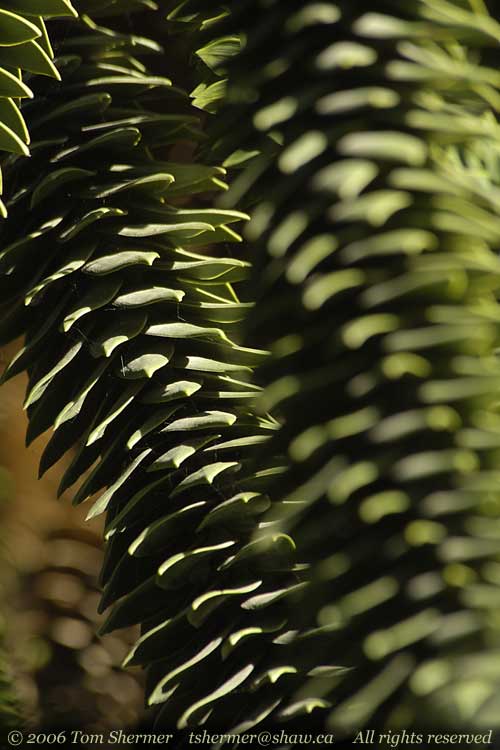 |
| |
|
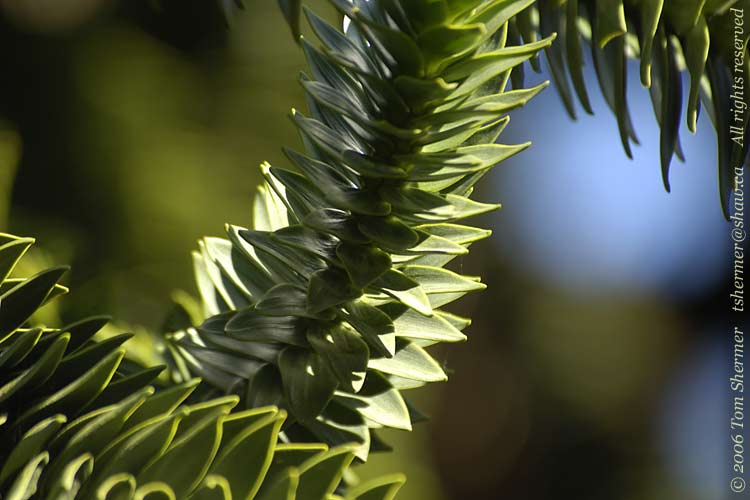 |
| |
|
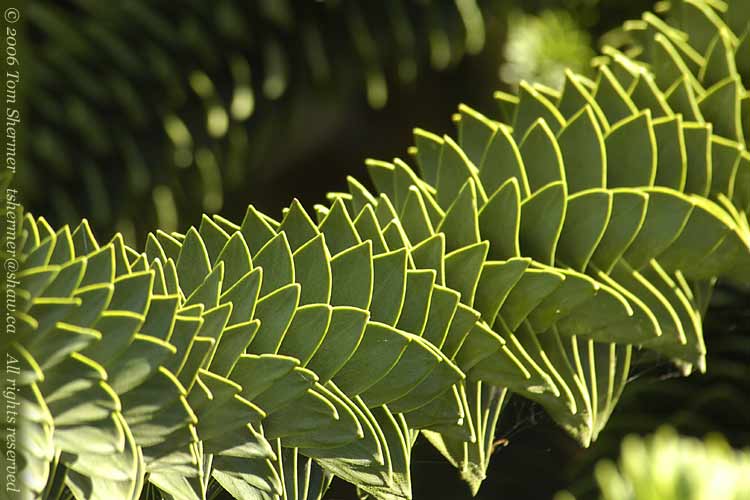 |
| After a
good session with the tree, I stopped by my car and changed to my
macro lens. Then I wandered vaguely downhill across a lawn over
to a line of Rhododendrons. As I was looking around for flowers
to take photos of, I found this Bald-faced Hornet with his head
stuck into the base of a flower bud. I don't know exactly what he
was doing, but he moving his front parts a little, and was very
intent. I moved in quite close to him with my camera to get this
shot and he didn't even notice. |
|
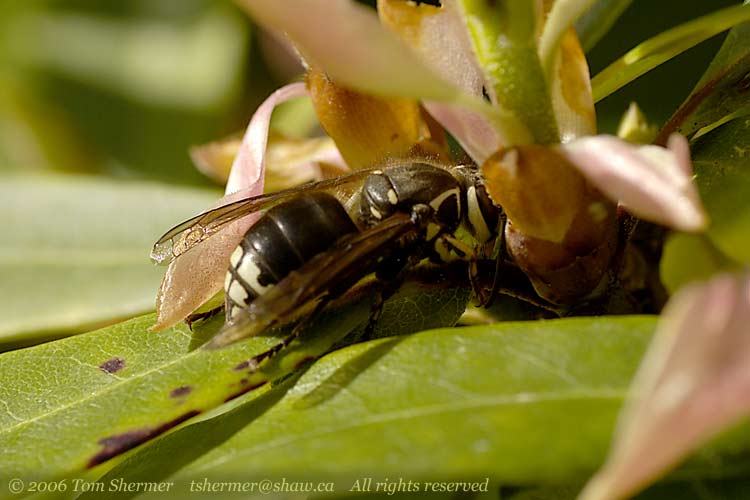 |
|
Maybe he had found
a woody part of the Rhodo and was chewing it up for nesting material.
Whatever he was doing, he was still doing it when I turned my
attention to another Rhodo a little further downhill. This one
had nice white flowers, and I took advantage of the macro lens
and got some close-ups of them.
|
|
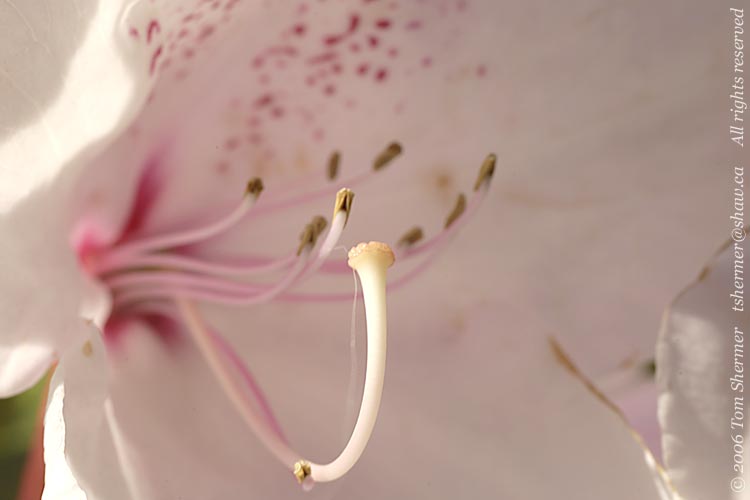 |
| Next I came
out under a tree by a little bed of tulips. (There were much larger
beds of tulips in the far side of the park, where they have flower
gardens.) The tulips were tall and the stems had all bent one way,
giving a bit of a dynamic feel to the scene. It took me a while
to find a composition that I liked, though—my macro lens is
a prime (non-zoom) lens, so I had to do a lot of moving around and
looking through the viewfinder to get something that worked. |
|
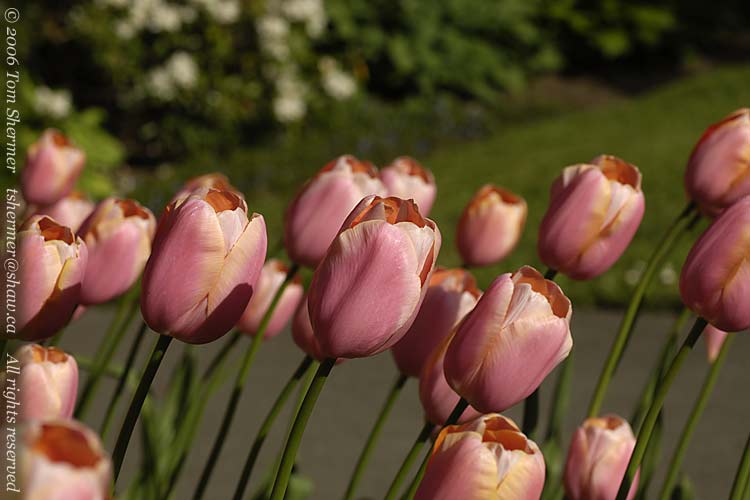 |
|
All of my other lenses
are zoom lenses.
A few meters down the
path, I found this honeybee buzzing around a little on the ground.
At first I thought it was injured and couldn't fly, because it
moved only small distances, stayed on the ground, and didn't fly
away from me. But then, after I took a few shots, it flew off.
I guess it was okay, after all.
|
|
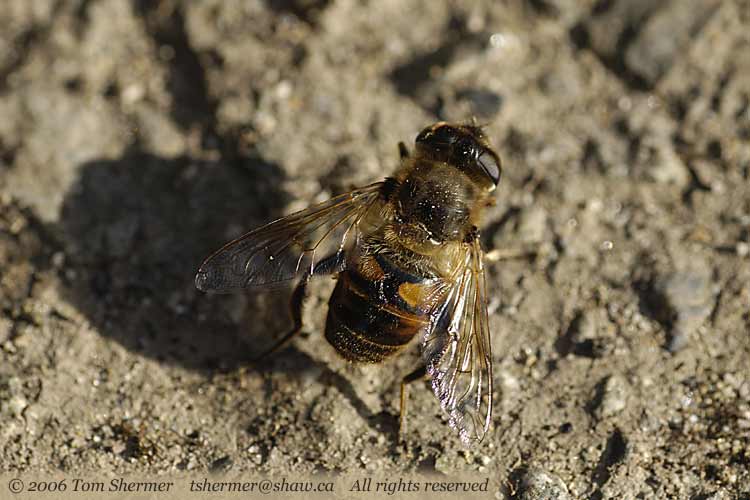 |
| It turned
out that it was my day for relatively motionless hymenopterans.
As I walked down a grassy knoll, I saw a little movement in the
grass, and found this bee buzzing and digging around. It was obviously
a bumble bee of some sort, but I'd never seen one with this color
pattern before. With a little research at home, I found out that
it's a Yellow-faced Bumble Bee, Bombus vosnesenskii. |
|
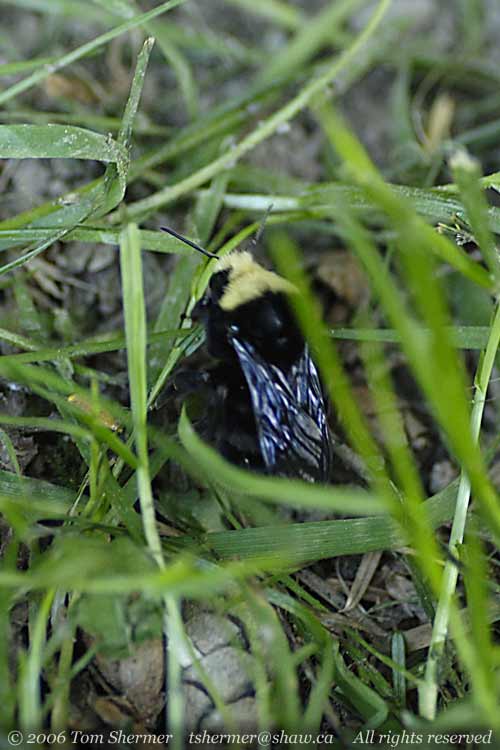 |
|
It was neat to find
a new kind of bumble bee; I had been under the mistaken impression
that we only had two types of bumble bees out here. I guess that's
a result of having general insect guide books rather than the
detailed scientific ones. (Although I must admit that I'm happy
with the general books, in that I don't have to be handy with
apid anatomical terms like gastral terga, scutum, and tegulae.
And you should be happy about that, too, because if I knew
that stuff, then I'd probably have to bore you with it.)
Bumble bees nest in
the ground; maybe this was a queen looking for a nesting location.
My last stop of the
waning afternoon was at another Rhodo, this one with lovely deep
pink flowers.
|
|
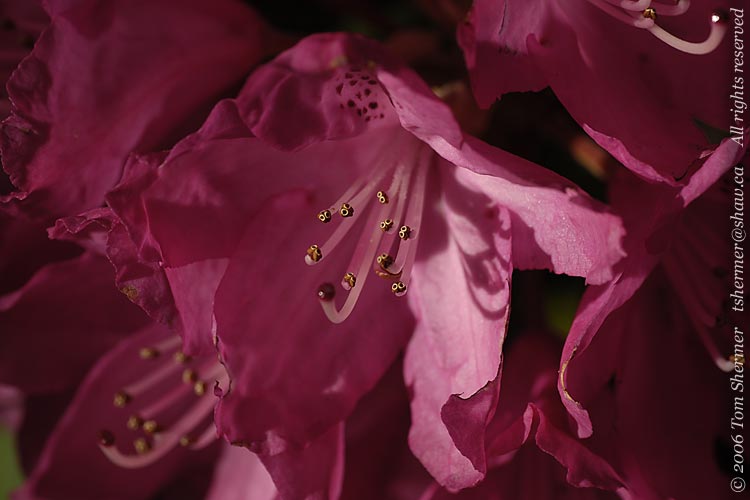 |
| This next
photo is on the same plant, looking down at the stems in the middle
of a flowerhead that has yet to bloom. |
|
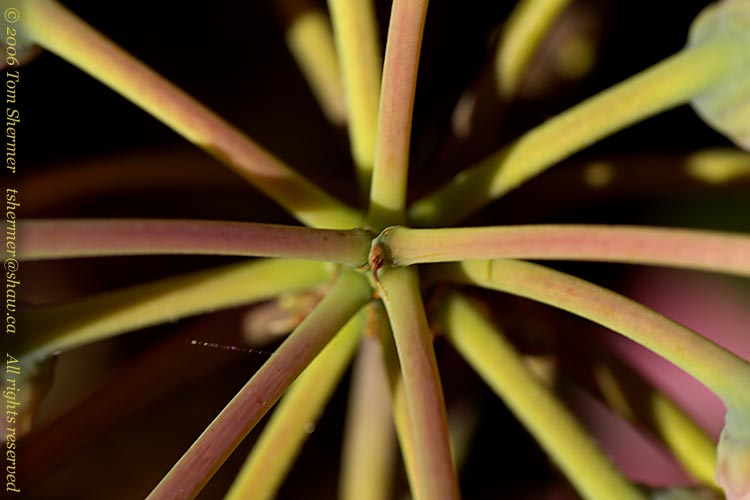 |
| As if that
wasn't fun enough, the Rhododendron yielded another interesting
form, a group of leaves that had grown upwards and was getting ready
to unfurl. |
|
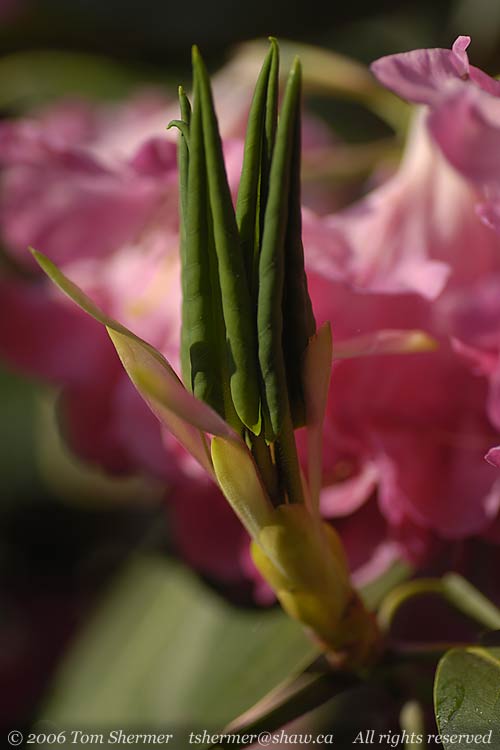 |
|
That did it for my
photos that day. It had been a lovely afternoon at Queen E. Park,
despite the relative birdlessness. The morning hadn't been all
that bad, either.
Next time I go to that
park, I'll get some bird photos. I promise.
Gettin' down with the
bees,
Tom
|
|
|